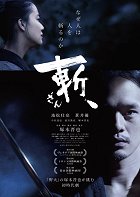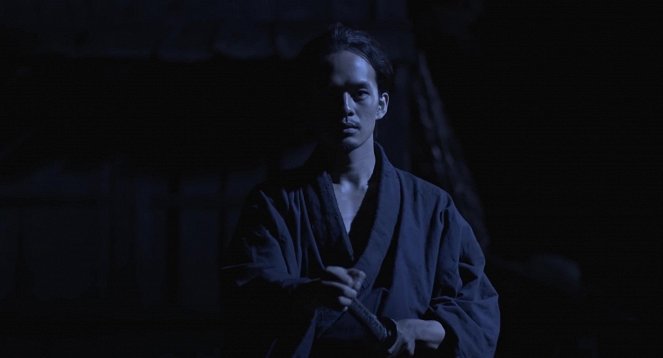Résumés(1)
After about 250 years of peace in Japan, samurai warriors in the mid-19th century were impoverished. Consequently, many left their masters to become wandering ronin. Mokunoshin Tsuzuki is one such samurai. To maintain his swordsmanship skills, Mokunoshin spars daily with Ichisuke, a farmer’s son. Ichisuke’s sister Yu watches them train with a hint of disapproval although there’s an unspoken attraction between her and Mokunoshin. While farm life is peaceful, there is monumental turmoil in Japan. The US Navy has sent Commodore Perry to Japan to insist that it trades with them. This in turn causes civil unrest. Yu is concerned as she senses that Mokunoshin will soon leave to join the impending civil war, and consequently die. One day the three of them come across two dueling samurai. The winner is Jirozaemon Sawamura, a mild-mannered yet skillful ronin. Sawamura stays in the village to look for other potential warriors when a group of outlaw ronin arrives. The villagers have heard terrifying rumors about the outlaw’s leader, Sezaemon Genda. When the hot-blooded Ichisuke takes on the outlaws, the direction of their lives drastically changes. (Venice International Film Festival)
(plus)Vidéo (2)
Critiques (1)
Killing is a deconstruction of the samurai cult, cut down to its marrow, which paradoxically had never been achieved before by any other Japanese filmmaker. All relativistic samurai films of the 1960s by filmmakers ranging from Kobayashi and Gosha to Okamota, always addressed the corrosion of samurai dedication, honour and ideals, as well as the status of the whole state of being a samurai. Characteristically for the extent to which the icon of the samurai is intertwined with Japanese society, however, no one had ever journeyed into the very essence of the samurai caste, which consists in killing. As the title of Tsukamoto’s film suggests, that is primarily what this distinctive filmmaker focused on – training to kill and dehumanisation of an entire social class and, in the figurative sense, society as a whole, which was defined by this goal. As usual, it suffices for Tsukamoto to have a handful of characters and a minimum in terms of production facilities and budget, as the power of his vision lies in searching for the central thesis and the depiction thereof in maximally expressive scenes with a considerable amount of symbolism. While Gosha’s samurai were dirty and ragged, they still had their honour. Tsukamoto’s samurai are ruthless beasts of prey, dehumanised masters of death and desperate individuals in whom the basest instincts are bound with inhuman social ideals and values. Tsukamoto brings back to the act of killing the plane of absolute boundaries – between being and non-being, ideals and emptiness, innocence and pain, and between the student and the master.
()


